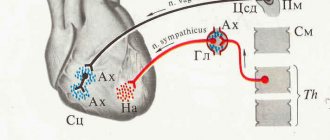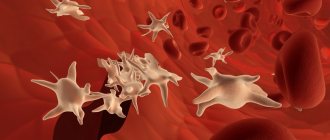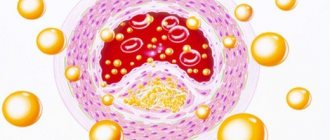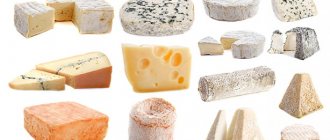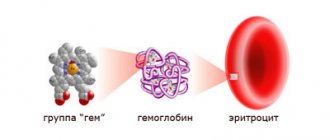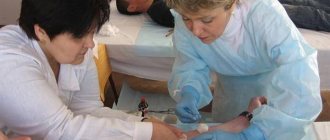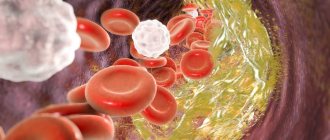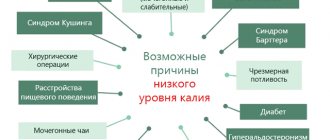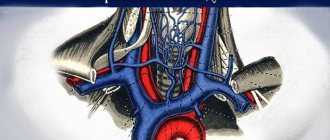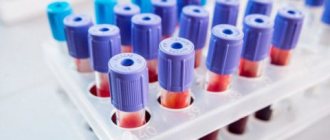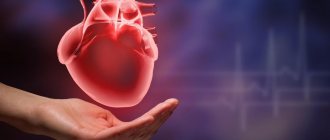0
Author of the article: Marina Dmitrievna
2017.08.29
3 934
Cholesterol
Today everyone knows that high cholesterol is bad. It leads to atherosclerosis, heart attack and stroke. But cholesterol in itself is not considered a negative element. It is a natural lipophilic (fatty) alcohol and a natural metabolic product necessary for the body.
Cholesterol deficiency is fraught with severe mental disorders (including suicide), disorders of the synthesis of bile and some hormones, and other dysfunctions of the body. Therefore, it is very important that the amount of the substance is balanced, since its deviations up and down are dangerous.
To normalize the level, it is not enough to adhere to an anti-cholesterol diet. You need to know which organ produces cholesterol in the human body and what causes disruptions in its functioning.
What is cholesterol?
A fat-like substance that strengthens cell membranes and belongs to the class of lipids is called cholesterol. The compound plays an important role in the functioning of all systems, and its deficiency (excess) leads to serious mental and physical disorders. Only 20% of the substance enters the human body through food.
Types of fatty substance
Cholesterol is divided into several categories, which affect human health in different ways. The main ones include:
- Low density lipoproteins (LDL). High levels of bad cholesterol lead to the formation of plaques and blockage of the circulatory system.
- High density lipoproteins (HDL). The substance, due to its structure, cleanses blood vessels and reduces the risk of developing heart and vascular diseases.
Cholesterol metabolism in the human body
Cholesterol metabolism occurs in two ways: endogenous and exogenous. The first one reflects the life cycle of the sterol produced by the body, the second one, which comes from food.
Endogenous cycle of cholesterol metabolism in the body
- The synthesis of cholesterol in the body is primarily carried out by the liver, to a lesser extent the skin, intestines, adrenal glands, and genitals. The formation of sterol requires acetyl-CoA, which every cell has. Through complex transformations, cholesterol is obtained from it.
- The gonads and adrenal glands immediately use cholesterol for the synthesis of hormones, and the skin uses vitamin D. The liver forms bile acids from sterol, some of which bind to VLDL.
- VLDL is partially hydrolyzed. This is how HDL are formed. The hydrolysis process is accompanied by a decrease in triglycerides and an increase in cholesterol.
- If a cell needs cholesterol, it signals this by synthesizing LDL receptors. Lipoproteins stick to them and are then taken up by the cell. Inside, LDL is broken down and sterol is released.
Exogenous cycle of cholesterol metabolism in the body
- A pancreatic enzyme prepares cholesterol esters for absorption.
- Intestinal cells process cholesterol derivatives for further transport, packaging the molecules into chylomicrons. The digestibility of nutritional sterol is 30-35%.
- Chylomicrons enter the lymphatic channel and move to the thoracic duct. Here lipoproteins leave the lymphatic system, moving into the subclavian vein.
- Chylomicrons contact muscle and fat cells and transfer neutral fats to them. After which they are removed from the bloodstream by liver cells, which extract cholesterol from lipoproteins.
- The liver uses exogenous sterol to synthesize VLDL or bile acids.
Cholesterol removal
Proper cholesterol metabolism requires a balance between the amount of alcohol the body needs and its actual level. Excess sterol is removed from HDL tissues. They adsorb cell sterol and transport it to the liver. Cholesterol-containing bile acids enter the intestines, from where the excess is excreted in the feces. A small part of the fat-containing alcohol is excreted in the urine during the excretion of hormones, as well as desquamation of the epithelium.
Regulation of cholesterol metabolism
The exchange of cholesterol in the body is controlled by the feedback principle. Our body analyzes the cholesterol content of the blood and either activates the enzyme HMG-CoA reductase or blocks its activity. This enzyme is responsible for one of the first stages of sterol synthesis. Controlling the activity of HMG-CoA reductase allows you to inhibit or stimulate the formation of cholesterol.
Sterol synthesis is inhibited when LDL binds to receptors. There is evidence that hormones influence the activity of alcohol formation. The administration of insulin and thyroid hormone increases the activity of HMG-CoA redutase, and glucagon and glucocorticoids inhibit.
The volume of sterol synthesis is influenced by the amount of dietary cholesterol. The more cholesterol our food contains, the less the body produces the substance. Interestingly, only the hepatic production cycle is inhibited. The activity of cells in the intestines, liver, adrenal glands, and gonads remains the same.
General scheme of cholesterol metabolism in the human body.
The role of cholesterol in the development of atherosclerosis
The relationship between the level of individual lipid fractions and health has long been known. High levels of atherogenic lipoproteins (VLDL, LDL) contribute to the development of cardiovascular diseases. This fraction of protein-fat complexes tends to settle on the walls of blood vessels. This is how an atherosclerotic plaque is formed. If it noticeably narrows or blocks the lumen of the vessel, coronary heart disease, brain disease, and circulatory failure in the legs develop.
The most terrible complications of atherosclerosis - myocardial infarction, stroke, gangrene of the feet develop when a plaque/thrombus is completely blocked or torn off, followed by blockage of blood vessels. Atherosclerosis of the aorta can result in dissection or rupture of the vessel.
Small HDL are not prone to settling on the walls of the vessel. On the contrary, they help remove cholesterol from the body. Therefore, their high level is a good signal.
Dependence of the risk of atherosclerosis on cholesterol levels.
| Concentration (mg/dl) | Risk level |
| LDL | |
| less than 100 | short |
| 100-129 | close to low |
| 130-159 | average |
| 160-189 | high |
| more than 190 | very tall |
| Total cholesterol (TC) | |
| less than 200 | short |
| 200-239 | average |
| more than 239 | high |
To determine risk, the ratio between different fractions of cholesterol is important.
| Risk level | Men | Women |
| TC/HDL | ||
| very low | less than 3.4 | less than 3.3 |
| short | 4,0 | 3,8 |
| average | 5,0 | 4,5 |
| expressed | 9,5 | 7,0 |
| high | more than 23 | more than 11 |
| LDL/HDL | ||
| very low | 1,0 | 1,5 |
| average | 3,6 | 3,2 |
| expressed | 6,5 | 5,0 |
| high | 8,0 | 6,1 |
In which organ is the lipid produced?
The largest amount of this substance is produced by the human liver.
The liver is directly responsible for cholesterol in the body, where up to 80% of the substance is formed. If lipoprotein levels are elevated, all types of liver are excluded. A small amount is formed in the small intestine (10%). Cholesterol is formed in the skin, kidneys, gonads and adrenal glands. Their number is no more than 10% of the total number of lipoproteins produced.
In humans, 80% of lipids are in free form, and the remaining 20% are bound.
Mechanisms for which cholesterol is responsible
If the body produces cholesterol in insufficient (excessive) quantities, then various disorders in the body’s condition are diagnosed. The responsibilities of lipids include:
- supporting cell membrane stability;
- participation in the synthesis of sex hormones;
- assistance in the functioning of serotonin brain receptors;
- formation of vitamin D;
- role in the production of steroid hormones;
- cell barrier against free radicals;
- boosting the immune system.
What is the difference between cholesterol and cholesterol?
Cholesterol is called cholesterol in chemical language . The substances are absolutely identical in their structure. There is no difference between cholesterol and cholesterol. It is the same. The ending – ol indicates that cholesterol belongs to the group of alcohols. The substance itself is formed as a result of synthesis from dietary fats in the liver.
Cholesterol functions as an energy substrate, the basis for the synthesis of hormones and a source of building material for the formation of new cells. The brain is 80% fatty tissue.
Why is the synthesis of the substance disrupted?
A person’s consumption of fatty foods leads to disruption of the production of this substance.
The main reasons that are responsible for impaired lipoprotein levels include:
- Lack of bile acids. The accumulation of cholesterol leads to the formation of gallstones.
- Lack of protein. Violation leads to an increase in LDL levels and poor cleaning of blood vessels.
- Imbalance of microflora. The body's defense mechanisms are reduced and problems with the digestive tract develop.
- Food. A lot of “bad” cholesterol comes from fatty foods.
- Kidney disorders. When the paired organ of the genitourinary system is not able to remove bile, which contains excess lipids, intoxication of the body occurs.
Why do lipid metabolism disorders occur?
Under normal conditions, the human body maintains metabolic processes at the required level. But under unfavorable conditions, metabolism is disrupted, which leads to undesirable consequences. The pathology of lipid metabolism develops under the influence of a number of unfavorable factors. These include an unhealthy lifestyle , the presence of addictions (smoking, excessive drinking of alcoholic beverages), lack of physical activity, abuse of fatty foods, sweets, non-compliance with the work and rest regime.
Frequent stress also causes problems in fat metabolism, which leads to increased cholesterol. Usually a person begins to “eat up” stress with junk food, receiving positive emotions from it. Over time, this leads to the accumulation of extra pounds, which negatively affects cholesterol levels.
Cholesterol is a substance that is vital for the normal functioning of physiological processes in the human body. But its excess, as well as its deficiency, leads to negative consequences.
To determine the concentration of plasma cholesterol, it is necessary to undergo a special blood test - a lipid profile. With a normal diet, adherence to a daily routine, adequate physical activity, and the absence of stressful situations, the level of this substance will be normal. This means that the body will be healthy!
How to deal with a violation?
The doctor resorts to prescribing medications if a change in diet does not bring the desired effect for the patient.
If symptomatic, a person is referred for diagnosis. After checking the level of lipoproteins in the blood, a therapeutic course is selected for the person. In case of minor violations, regulation of nutrition becomes a sufficient measure. Fatty, smoked dishes are replaced with lean poultry dishes. Many foods high in protein are added to the diet. If it is not possible to normalize the level with the help of a diet, then they resort to drug treatment. The medications prescribed by your doctor must be taken throughout your life.
People believe that cholesterol comes into the body through food. However, this is only 20% of the total. The main part is synthesized directly in itself. The main supplier of lipid is the human liver, which generates about 80%. Therefore, it is worth closely monitoring her health in order to prevent disorders caused by improper lipid metabolism.
Total cholesterol is elevated: what does this mean?
Formation of cholesterol plaques with high levels of total cholesterol.
If cholesterol levels are elevated, it means that there is an excess amount of fat fragments circulating in the blood. They settle on the first vessel they come across with damaged walls. This is a feature of the formation of atherosclerotic plaques; they do not form on healthy intact vessels.
Microscopic wounds inside the vascular bed are always “stuck” with platelets. These are blood cells that form a blood clot. It stops bleeding and covers the surface of the wound. Aggregates of platelets have the same charge as LDL and are attracted. “Bad” cholesterol sticks to the resulting blood clot; over time, this formation becomes saturated with calcium and hardens, forming a full-fledged atherosclerotic plaque.
The narrowed lumen of the vessel leads to an increase in peripheral blood pressure. The patient exhibits mild hypertension. In the absence of treatment, systolic pressure figures reach 200 units, and cardiovascular complications develop.
The heart tries to compensate for the lack of blood circulation intensity by force of contractions. The myocardium quickly fails due to increased load, symptoms of heart failure, angina pectoris, and a pre-infarction state appear. The most dangerous complications of atherosclerosis are heart attack and stroke. This is a blockage of blood vessels with complete blocking of blood flow to certain tissues, resulting from the detachment of an atherosclerotic plaque from its attachment site. Heart attack and stroke can also be the consequences of the active growth of plaque in a vessel to such a size that it blocks the bloodstream.
Cholesterol metabolism is an important process in the life of the human body.
Since some types of cholesterol cause vascular diseases, effective metabolism of this substance is the key to human health. You can regulate cholesterol production to a small extent (about 20%) through diet. But the main control function is performed by the liver: it increases or decreases production. It also produces and absorbs bile, which is needed for the absorption of lipids. In addition to lifestyle, all these processes can be regulated with the help of medications. The complex system of chemical reactions at the cellular level is in no way similar to the popular opinions about cholesterol that exist in modern society.
How to Lower LDL Cholesterol Levels
Eliminating sources of exogenous (dietary) cholesterol helps to reduce blood lipid levels in no time.
The diet of a patient with atherosclerosis should be balanced and complete. Important aspects of rational therapeutic nutrition are:
- limiting sources of animal and hydrogenated vegetable fat (fatty meats, high-fat dairy products, chicken eggs, meat by-products, margarine);
- complete replacement of butter with vegetable oils;
- limiting the consumption of quickly digestible carbohydrates;
- eating fibrous foods (slowly digestible carbohydrates, fruits, non-starchy vegetables, fiber).
Quitting smoking is a condition for successful therapy. The fight against obesity should begin as quickly as possible. To lose weight, you need to increase physical activity. It is important to monitor the quality of your sleep. It is useful to take an evening walk, ventilate the room, and turn off all sources of artificial light.
You can control lipid levels with diet and exercise if your cholesterol level does not exceed 8.9 mmol/l.
The next stage of therapy is the prescription of medications. Drugs with lipid-lowering effect:
- statins (Atorvastatin, Simvastatin, Rosuvastatin);
- fibrates (hemfebrozil, fenofibrate);
- inhibitors of cholesterol absorption in the intestine (Ezetimibe);
- niacin, its derivatives;
- bile acid sequestrants (cholestyramine).
The mechanism of action of the drugs is to reduce cholesterol levels in the blood. Medicines have different pharmacodynamics. Proper use ensures a decrease in the level of bad lipids. Pharmacotherapy is not effective if the patient does not follow a specialized lipid-lowering diet.
In what form is cholesterol found in the body?
Over the course of many decades of studying this substance, scientists have identified several types of cholesterol molecules, which each have their own functions in the body.
Due to this distribution, cholesterol can be beneficial (good) and can also be harmful (bad):
- Good cholesterol (HDL) is a high molecular density lipoprotein that is associated with protein molecules and, actively moving through the bloodstream, collects free cholesterol molecules and delivers them back to the liver, where they are utilized by bile. Most of HDL is used to produce bile acids;
- Bad cholesterol (LDL) is a low molecular density lipoprotein that transports cholesterol into the cells of organisms, but LDL also has the ability to settle on the inner sides of the arterial membranes, forming a cholesterol plaque;
- Very low molecular weight lipoproteins (VLDL) are lipid molecules that contain triglycerides;
- Triglycerides - found in VLDL, are energy sources for body cells;
- Chylomicrons are lipoprotein molecules that transport cholesterol molecules from the intestines to liver cells.
Standard indicators for the ratio of high molecular weight lipoproteins (HDL) to the total amount of low molecular weight lipoproteins (LDL and VLDL) do not exceed a ratio of 1:3.
LDL and HDL
Medicines against bad cholesterol
First of all, various medications based on aspirin should be taken by all people over the age of 45 years. This will not only help control your cholesterol levels, but will also reduce the risk of atherosclerosis and plaque clogging your blood vessels. Both vitamin B and anti-high blood pressure medications are excellent for these purposes.
As can be seen from the above, cholesterol does not always play a negative role in the body, that is, its content within acceptable limits is mandatory. However, if the levels are exceeded, the risk of developing various diseases, often leading to death, increases significantly.
By following the tips mentioned above, a large number of people have the opportunity to not only learn everything about cholesterol, but also fight its negative consequences.
Treatment of disorders
To reduce blood cholesterol levels, you need to lead a healthy lifestyle. Excess weight needs to be reduced. Do exercises regularly. Follow a diet (foods consumed should not contain saturated fats or trans fats).
If a positive lifestyle does not lead to lower cholesterol levels, medications from the statin group are prescribed. They can reduce the level of “bad” cholesterol, thereby preventing stroke or heart attack.
In conclusion, we will give three simple useful tips:
- Don't give up fats completely. This is the source of our energy, the protective, building material of cell membranes.
- Watch the intake of fats in your body. For city dwellers, the daily fat intake, if converted into calories, should be 600-800 kcal, which is approximately 30% of the latter’s daily intake.
- Consume only natural fats. The most useful are those that remain liquid at room temperature.
Causes of increased cholesterol (cholesterol)
Dysfunction of fat metabolism is a trigger factor for the development of atherosclerotic changes.
Lipid imbalance is a consequence of:
- smoking;
- long-term arterial hypertension;
- diabetes mellitus;
- physical inactivity;
- constant emotional stress;
- postmenopause;
- poor nutrition;
- homocystinuria, homocysteinemia;
- hypothyroidism;
- taking glucocorticosteroids, combined oral contraceptives.
Everyone can calculate the risk of developing atherosclerosis and its complications using the SCORE (Systemic Coronary Risk Evaluation) scale prepared by the European Guidelines on Cardiovascular Disease Prevention.
High cholesterol
It is almost impossible to notice that total cholesterol is elevated on your own. Of course, there are some traditional medicines that allow you to determine its level, but still, to be sure, it’s worth visiting a specialist.
Many doctors claim that a high content of cholesterol with high density lipoproteins only brings benefits to the body, but here, too, there are certain norms for its content in the human body. For an adult who does not suffer from any diseases, this value is 3.7 m/mol.
Where does cholesterol come from?
About 70–80% of cholesterol production is caused by liver function. The rest is due to intake through food. A properly selected diet can influence the production of cholesterol and its concentration in the blood. The foods that are richest in cholesterol include the following: beef liver, eggs, butter, and full-fat sour cream.
But in the human body, not only the liver is responsible for the synthesis of this substance. A small part of it is produced in the intestines (15%) and other tissues whose cells have not lost their nucleus. Thus, every cell in the human body can produce cholesterol. About 1000 mg is synthesized in the body every day. lipoproteins of different densities.
From 200 to 500 mg comes with food. cholesterol. Moreover, external (exogenous) cholesterol inhibits the production of internal cholesterol. Compounds coming from outside enter the blood as esters and only there are converted into cholesterol by cholesterol esterase. Cholesterol is always present in the blood. Its functions are so important that it is not possible to completely replace it with something from the outside.
